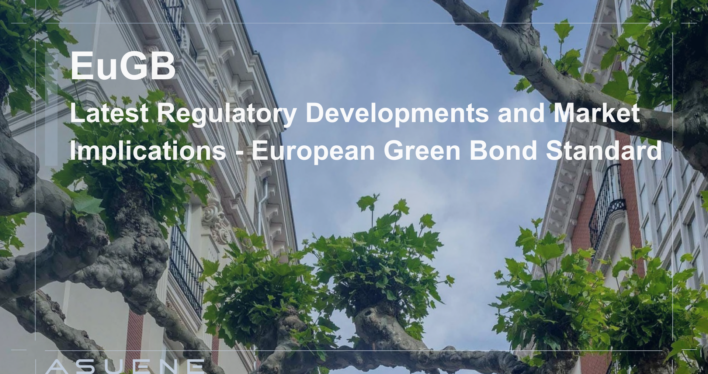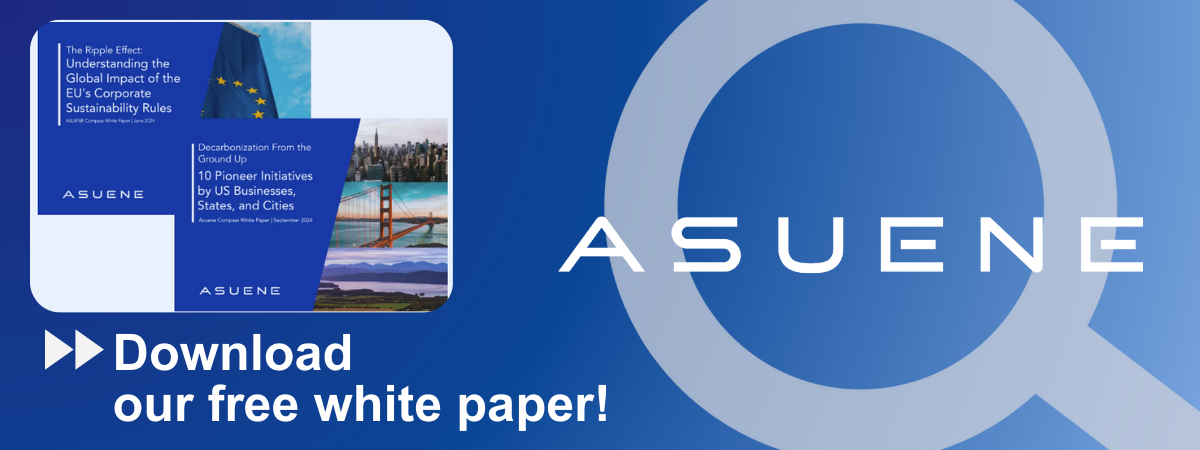- Article Summary
-
Introduction
In December 2023, the European Union finalized the European Green Bond Regulation (EuGB), a landmark framework designed to strengthen the credibility and transparency of the green bond market. Set to apply from December 21, 2024, the EuGB introduces a voluntary labeling system that aligns with the EU Taxonomy for sustainable activities and mandates rigorous disclosure and external verification. The regulation aims to combat greenwashing, provide investors with clarity, and guide issuers toward high-integrity green financing.
This article outlines the key components of the EuGB regulation, recent developments, early market reactions, and strategic implications for issuers—including those outside the EU.
Core Features of the EuGB Regulation
The EuGB framework introduces a voluntary but highly standardized label for green bond issuance. Key elements include:
- Minimum Use-of-Proceeds Requirement: At least 85% of funds must be allocated to EU Taxonomy-aligned economic activities. The remaining 15% may be directed toward sectors not yet fully covered by the Taxonomy, such as agriculture and aviation, via a “flexibility pocket.”
- Mandatory Pre- and Post-Issuance Reporting:
- A pre-issuance factsheet validated by an external reviewer
- Annual allocation reports with third-party assurance
- At least one impact report during the bond lifecycle
- Disclosure Transparency: Issuers must publish all relevant documents—including use-of-proceeds, impact reports, and prospectus details—on their websites for at least one year after bond maturity.
- External Review and Supervision: Review providers must be registered and supervised by the European Securities and Markets Authority (ESMA), ensuring quality and independence.
Figure 1: Structural Components of an EuGB-Compliant Bond
- Taxonomy-aligned use-of-proceeds (≥85%)
- Pre-issuance factsheet (externally verified)
- Annual allocation reporting
- Impact reporting
- ESMA-registered reviewer involvement
Market Activity and Early Adoption
Although the EuGB regime is voluntary, major public and private issuers have already begun aligning with the framework to signal transparency and investor commitment.
- A2A (Italy): In January 2025, Italian utility A2A became the first corporate issuer to launch an EuGB-compliant bond, raising €500 million for energy efficiency, renewables, and pollution control. The issuance was 4.4 times oversubscribed, attracting €2.2 billion in orders.
- Île-de-France Mobilités (France): Issued a €1 billion EuGB for low-carbon public transport, marking the first such issuance by a public sector entity in Europe. The bond is listed on Euronext Paris.
These early movers highlight the growing preference for robust ESG credentials among investors and public institutions.

Strategic Implications for Issuers
The EuGB label is positioned as the “gold standard” for green bonds in Europe. While it remains voluntary, its adoption could become a de facto requirement in green capital markets due to investor pressure and regulatory convergence. Strategic considerations include:
- Investor Relations: EuGB compliance signals commitment to high ESG standards and attracts long-term institutional investors.
- Cost vs. Credibility: While the EuGB entails higher compliance costs, including external reviews and detailed reporting, the credibility benefits may offset these through lower cost of capital and tighter spreads.
- Non-EU Issuers: Companies outside the EU, particularly those targeting European investors, may benefit from issuing EuGB-aligned bonds to access diversified capital pools and enhance brand reputation.
Regulatory Oversight and Future Developments
The EuGB regime is backed by increasing scrutiny of external reviewers. ESMA is tasked with maintaining a public register, setting conflict-of-interest rules, and auditing reviewer methodologies. Over time, this could influence best practices in global sustainable finance, particularly in markets with less oversight of ESG verification.
Key areas to watch include:
- Reassessment of the 15% flexibility pocket
- Integration with EU Green Bond Factoring under the European Single Access Point (ESAP)
- Coordination with international taxonomies (e.g., ASEAN, Japan)
Conclusion
The European Green Bond Regulation marks a significant milestone in aligning sustainable finance with rigorous standards and regulatory oversight. While voluntary, the EuGB label is rapidly setting a new benchmark for credibility, transparency, and investor confidence in green bonds. Issuers that adopt this framework proactively can expect to enhance their ESG positioning, reduce greenwashing risks, and broaden their access to sustainable capital markets. As market adoption grows, EuGB may not only reshape European issuance—but also influence global sustainable finance norms.
Why Work with ASUENE Inc.?
Asuene is a key player in carbon accounting, offering a comprehensive platform that measures, reduces, and reports emissions, including Scope 1-3, with expertise in decarbonization. Asuene serves over 10,000 clients worldwide, providing an all-in-one solution that integrates GHG accounting, ESG supply chain management, a Carbon Credit exchange platform, and third-party verification.
ASUENE supports companies in achieving net-zero goals through advanced technology, consulting services, and an extensive network.


